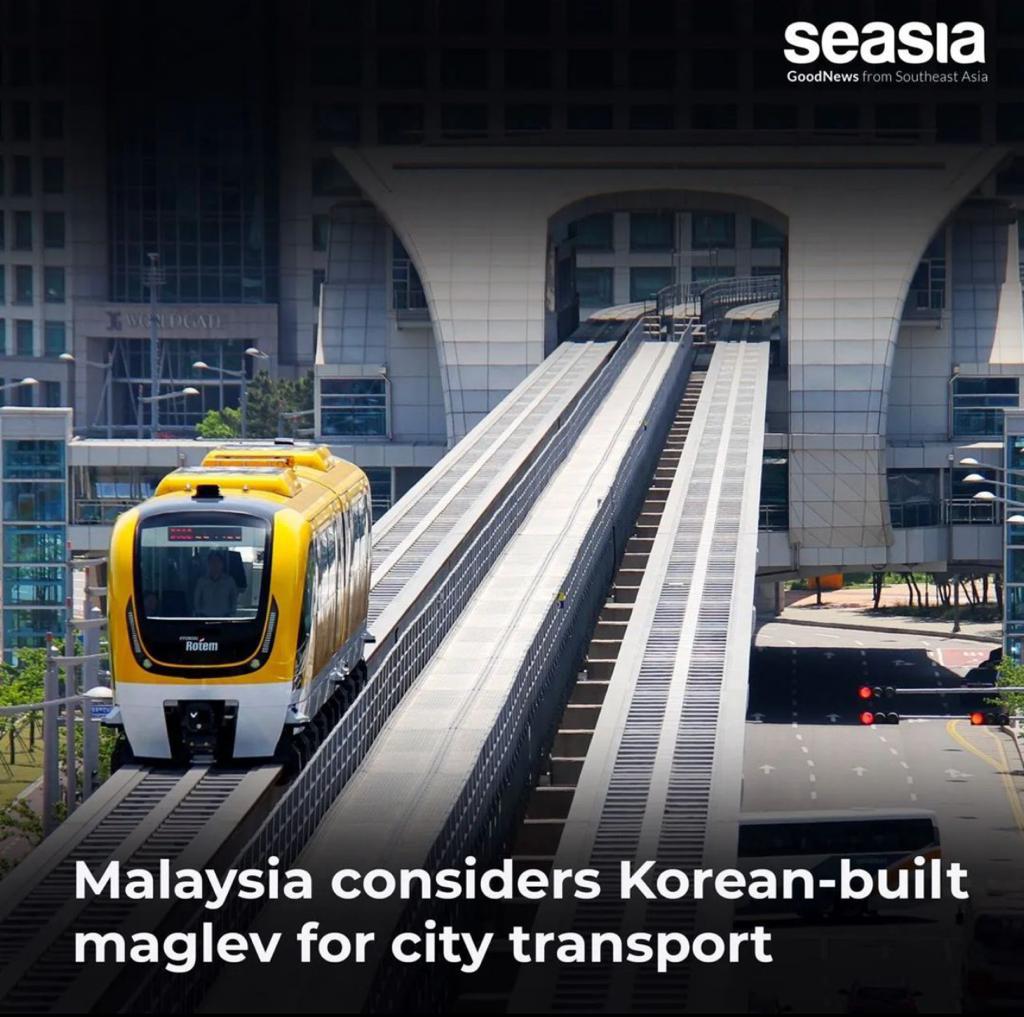The country's administrative capital, Putrajaya, where a once-abandoned plan for a monorail is now being revived, is considering a maglev system, according to Malaysia's transport minister.
In a formal announcement shared on Facebook On June 13, 2022, Dr. Wee Ka Siong, the Malaysian transport minister, claimed that senior representatives from several significant South Korean companies, including Hyundai Corporation and train manufacturer Hyundai Rotem, electrical equipment manufacturer EP Korea, and Maglev MKC, had given him a presentation on the plan during a recent courtesy visit.
Dr. Wee was accompanied by the rail director of the ministry of transportation as well as the CEO of KTMB, the main railroad company in Malaysia.He claimed that EP Korea's railway senior MD Yoo Jai Tark provided the briefing on the plans for a maglev system for the Putrajaya region.

South Korea has first-hand experience with the technology thanks to a 6 kilometer maglev line that opened to the public in 2016 and uses 'Ecobee' trains made by Hyundai Rotem to transport passengers to and from Incheon International Airport.
In 1995, Putrajaya's development got under way in an effort to relieve Kuala Lumpur's overpopulation. Although neither the head of state or the parliament, it is now the location of the federal government and the judiciary.
Although it would eventually be served by the projected Kuala Lumpur-Singapore high-speed rail line, Putrajaya's lone railway station is on a commuter route between Kuala Lumpur International Airport and the city.
After bridge building had already started, work on a monorail system was abandoned in 2004. However, the concept was reintroduced in 2020, though no concrete designs have yet been disclosed.
The Ministry of Transport "would be holding further negotiations soon with the Ministry of Federal Territories on establishing such a monorail system for Putrajaya, particularly on its interaction with other rail systems and transportation networks," Wee stated after this week's briefing.
Should the project prove successful, one of Malaysia's most significant cities will include the quickest railway technology, which would open the door for similar expansion in other regions of the nation.
Since they use magnetic levitation—hence the term maglev—to raise the train carriages above the rails and accelerate them forward at breakneck speeds, maglev trains are renowned for being incredibly swift.
A number of advantages have been identified, including lower maintenance costs due to fewer moving parts, decreased noise and air pollution, and higher energy efficiency. The technology has so far allowed trains to travel at speeds of over 600 km/h.
Source: E&T Engineer and Technology, SEA.mashable.com


















